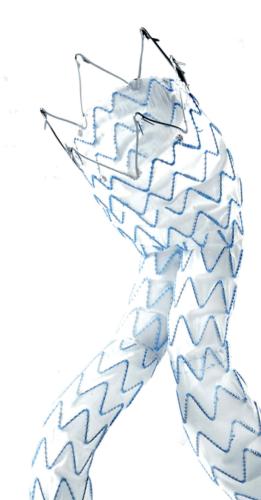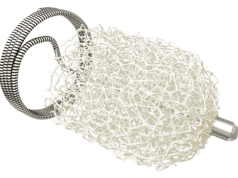
The EVAR 1 trial—investigating the efficacy of endovascular aneurysm repair (EVAR) versus open repair—and the ENGAGE registry—examining the performance of the Endurant (Medtronic) stent graft—are two or the largest EVAR trials conducted to date. In a comparison of their data at the 2016 VEITHsymposium (15–19 November, New York, USA), Dittmar Böckler (University of Heidelberg, Heidelberg, Germany) told delegates that newer generation devices should use EVAR 1 data to benchmark future clinical performance, while the ENGAGE registry demonstrates how technical evolution has already contributed to improved patient outcomes.
“It is certainly clear that the EVAR 1 trial, among others, represents the benchmark trial for the worldwide care of abdominal aortic aneurysms,” Böckler told the VEITHsymposium audience, with 15-year results of the trial having been published earlier this year in The Lancet.
Recapping the four-year outcomes of EVAR 1, Böckler said that the data showed that post-operative complication rates were higher in the EVAR group than in the open repair group and that the reintervention rate was also higher (20% for EVAR vs. 6% for open surgery). All-cause mortality was similar between the two groups (approximately 28%), and there was a persistent reduction in aneurysm-related deaths in the EVAR group (4% vs. 7%). In this follow-up period, more than 50% of aneurysm-related mortality at 30 days was attributable to endograft rupture. None of the devices used in this trial are still available on the market, and several have since been replaced by newer-generation stent grafts. The challenge for these newer-generation devices now, Böckler explained, is to discover whether early EVAR benefit shown by EVAR 1 can be sustained by reducing the rate of late complications and reinterventions.
Böckler explained that the designs of the two trials were similar. EVAR 1 was a multicentre randomised controlled trial of 1,252 patients (626 in each arm) with aneurysms of at least 5.5cm in diameter, treated with first-generation endografts and followed out to 15 years. The ENGAGE registry was a real world, all comer registry enrolling 1,263 patients to be treated with a single fourth-generation device (Endurant) and followed out to 10 years.
The study endpoints for both trials were complication rate, reintervention rate, all-cause mortality and aneurysm-related mortality.
In EVAR 1, complication rate for the EVAR group was 41% at four years, compared with 9% in the open group. EVAR reintervention rate was 20% compared with 6% in the open group. “This shows that a higher complication rate led to more reinterventions,” Böckler said.

The four-year results for ENGAGE showed a 30% (11% lower than with EVAR 1’s first-generation devices) complication rate for EVAR with Endurant and a 13% reintervention rate (7% lower than in EVAR 1). Thus, the lower complication rate in the ENGAGE patient cohort led to fewer reinterventions when compared with the EVAR 1 outcomes.
In EVAR 1, there was no difference for all-cause mortality (26% for EVAR vs. 29% for open repair) and only a 3% difference for aneurysm-related mortality (4% for EVAR vs. 7% for open repair). In ENGAGE, although there was no difference in all-cause mortality (24% for ENGAGE), aneurysm-related mortality was 1.6%.
“In other words,” Böckler said, “aneurysm-related mortality of 3.5% was observed in EVAR 1, versus 1.6% in ENGAGE,” equating to a 46% reduction in aneurysm-related mortality between the two trials. Furthermore, the rate of death from rupture after endovascular repair was 0.9% in EVAR 1, compared with 0.5% in ENGAGE.
“In summary, the EVAR 1 trial demonstrated the early benefit of EVAR at four years, at the cost of higher reintervention rates,” Böckler explained. “There is a strong correlation between complications and reintervention, with reduced complications lowering reintervention rates by 35% in the ENGAGE registry, which also saw lower aneurysm-related morality and lower post-EVAR rupture mortality.”
He continued, “Large real world registries such as ENGAGE will potentially allow us to understand how to customise patient follow-up, increasing the cost-effectiveness of EVAR. Endurant has set a new benchmark for EVAR device performance, but longer-term data will be needed to see if durability is maintained.”













